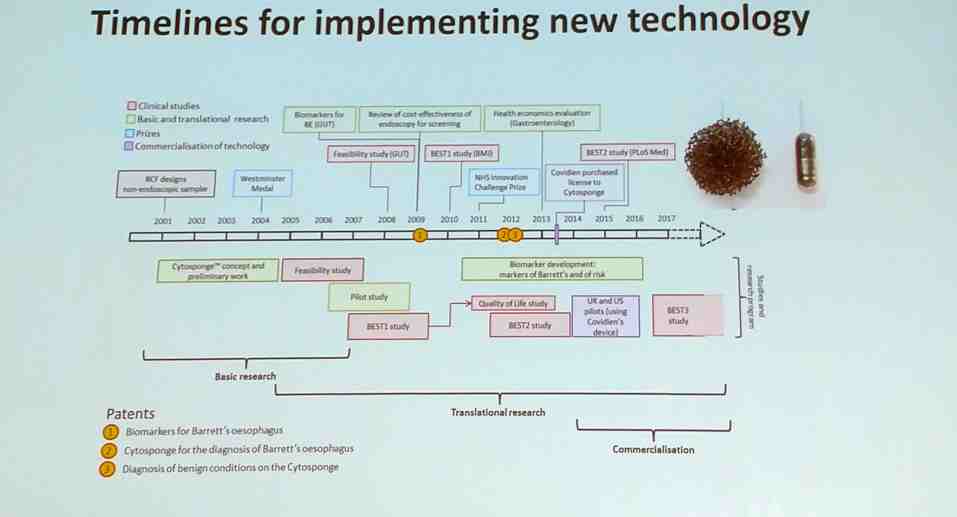We had an interesting discussion with Dr Rebecca Fitzgerald, MD who is a Professor of Cancer Prevention at the University of Cambridge. Dr Fitzgeralds work aims to improve methods for early cancer detection for esophageal cancer through better understanding of the methods of molecular pathogenesis.
She has developed many methods to quantify biomarkers in Barrett’s syndrome. The tools that she used was simple and it works but it still takes significant development to bring it to medical practice.
Her method requires sampling the esophagus to find potential cancerous cells. The typical method would be do a biopsy in which a complex procedure will be performed on a subject to get a snip of a tissue from the esophagus and then perform an histological exam of the tissue.
Instead she developed in which a sponge is attached to a string and is swallowed by the patient. The string is then used to pull out the sponge and the cells that are attached to the sponge are sampled histologically.
Since this is a new method of sampling, a clinical trial needs to be done that will prove that the method works, second a more simple procedure needs to be approved for insurance coverage and then the general population of surgeons, pathologists and oncologists need to be convinced that the method works to sample the esophagus.
The process is complex and is shown below.

It is incredible that the amount of time this takes to implement and how much money and how many people may have been involved to bring it to the patient.
The easier step is to use the same histological biomarker that has been used to treat Barrett’s syndrome. The good news is that sometimes simple solutions yield great benefit and can provide good answers.